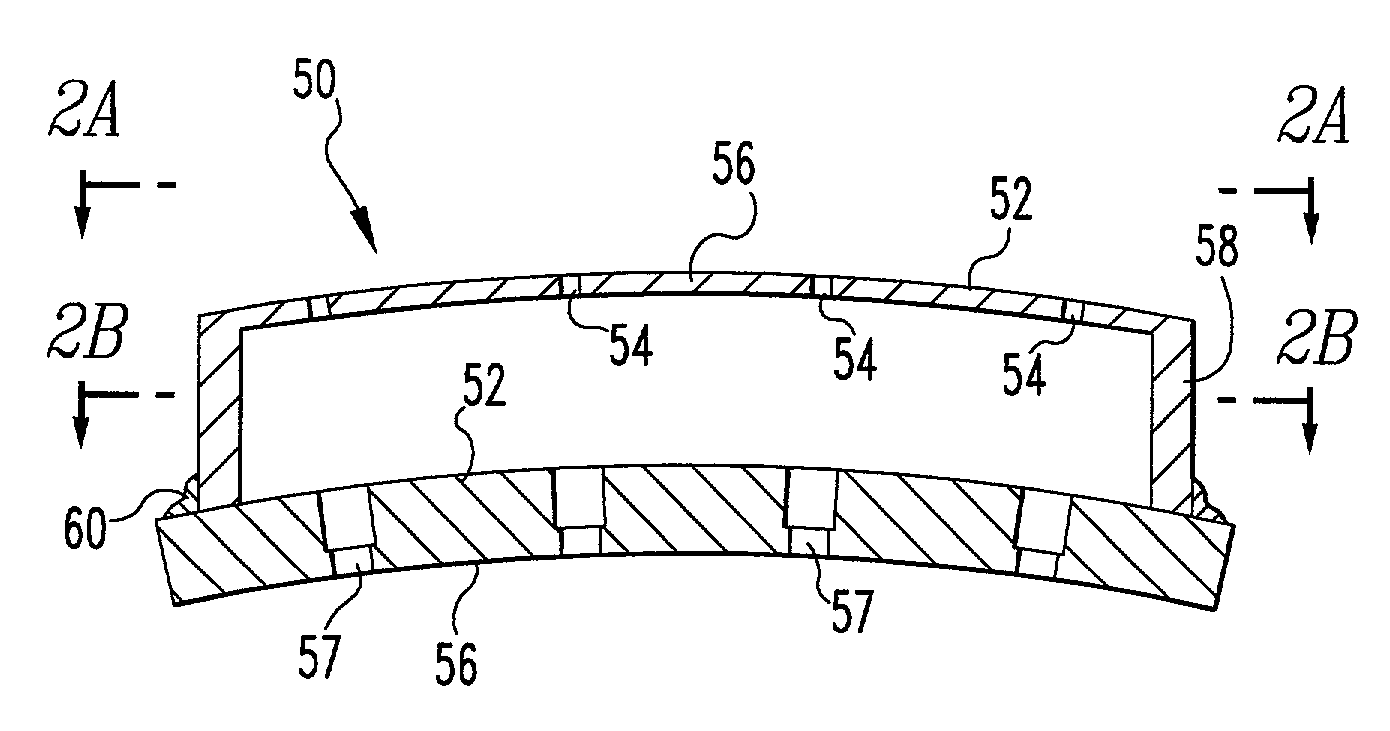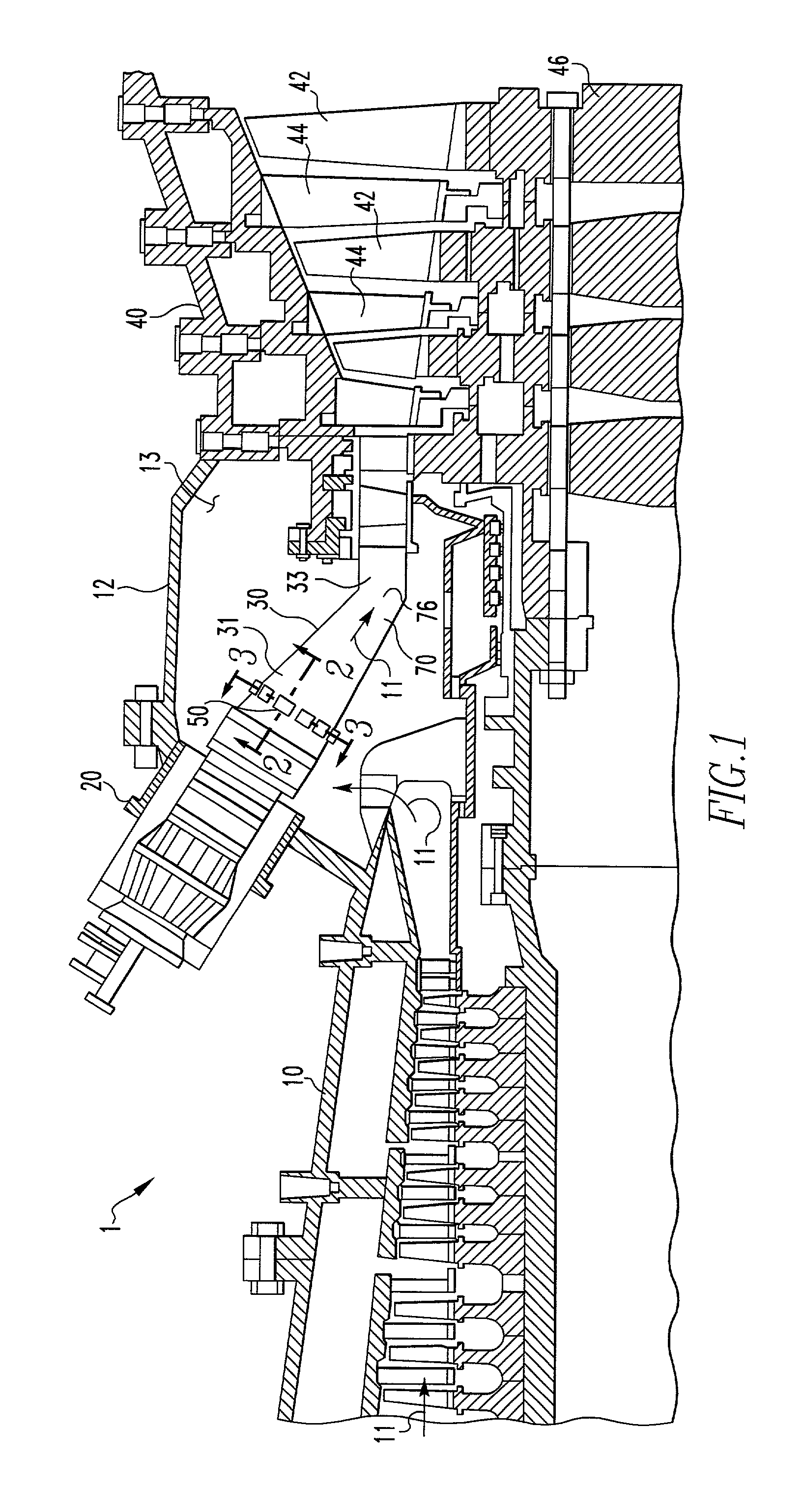Resonator adopting counter-bored holes and method of suppressing combustion instabilities
a counterbored hole and combustion instability technology, applied in the field of resonances, to achieve the effect of effectively dampening the instabilities of acoustic energy and avoiding an increase in mass air flow
- Summary
- Abstract
- Description
- Claims
- Application Information
AI Technical Summary
Benefits of technology
Problems solved by technology
Method used
Image
Examples
Embodiment Construction
[0024]As shown in FIG. 1, a combustion turbine power plant 1 includes a compressor assembly 10, a combustor assembly 20, a transition section 30, and a turbine assembly 40. The compressor assembly 10, combustor assembly 20, transition section 30, and turbine assembly 40, define a flow path 11. The combustor assembly 20 may be a can-annular or annular combustor assembly.
[0025]As is known in the prior art, the compressor assembly 10 includes a plurality of rotating blades and stationary vanes structured to compress a fluid. The combustor assembly 20 is disposed within a casing 12. The casing 12 defines a plenum 13. Compressed air from the compressor assembly 10 is delivered to the plenum 13. The combustor assembly 20 is coupled to a fuel source (not shown). Within the combustor assembly 20, compressed air and fuel are mixed, ignited and consumed in a combustion zone, thereby creating a working gas. The working gas is delivered through flow path 11 within the transition section 30. Tra...
PUM
 Login to View More
Login to View More Abstract
Description
Claims
Application Information
 Login to View More
Login to View More - R&D
- Intellectual Property
- Life Sciences
- Materials
- Tech Scout
- Unparalleled Data Quality
- Higher Quality Content
- 60% Fewer Hallucinations
Browse by: Latest US Patents, China's latest patents, Technical Efficacy Thesaurus, Application Domain, Technology Topic, Popular Technical Reports.
© 2025 PatSnap. All rights reserved.Legal|Privacy policy|Modern Slavery Act Transparency Statement|Sitemap|About US| Contact US: help@patsnap.com



